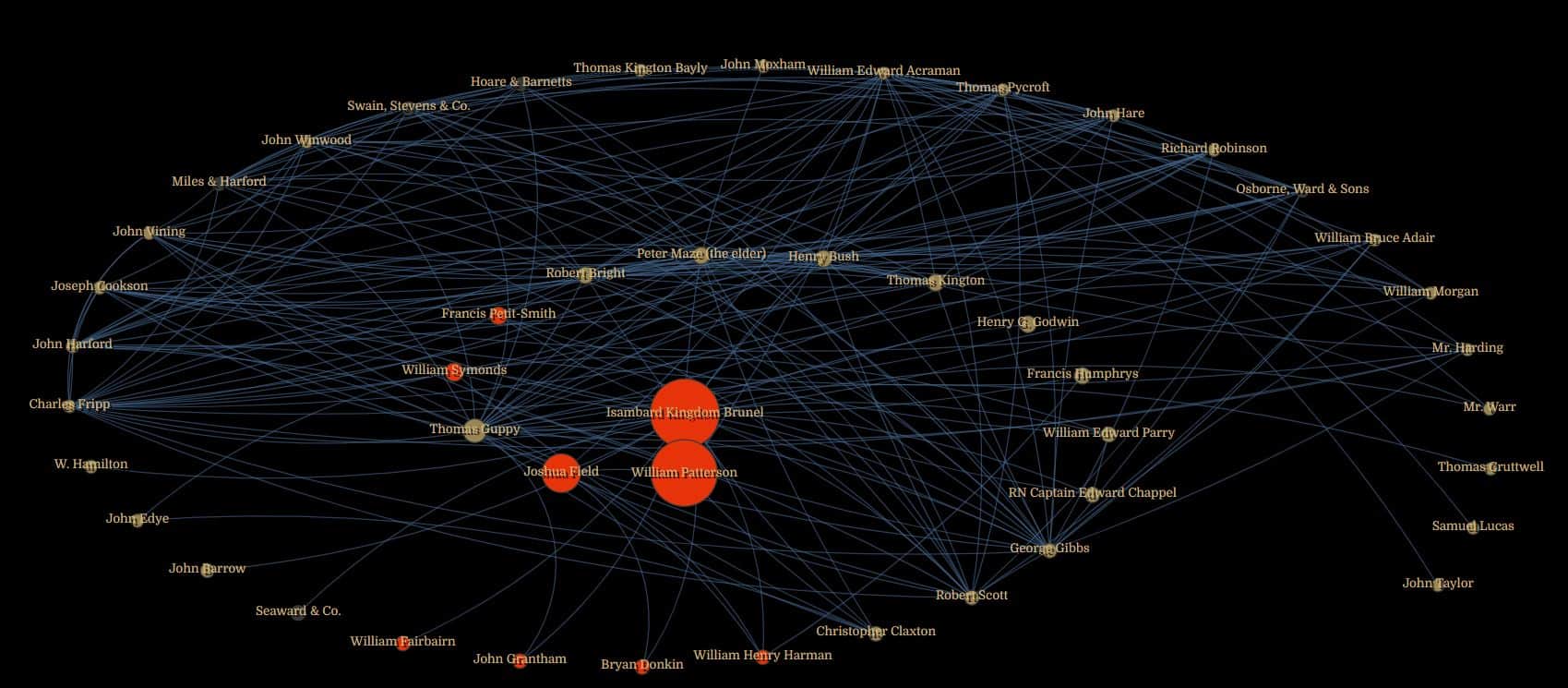
Brunel’s Network
Brunel’s Network: Communities of Innovation in the 19th Century
Brunel’s Network is a project that has begun to map and visually represent the working relationships and professional connections behind the major marine engineering projects conducted by Isambard Kingdom Brunel. These projects were:
- The Great Western steam ship, the first purpose-built ocean-going steamship (launched in 1838)
- The Great Britain steam ship, the first ocean-going ship built of iron, and driven by a propeller (launched 1845)
- The Great Eastern steamship, the largest vessel built in the 19th century, which laid the first continuous, operating length of telegraph cable between Europe and North America (launched 1860).
Viewers can explore all of the people that Brunel worked with on these projects, finding out who had the greatest influence on the project, who drew the most investors and engineers to the work, and who provided suggestions and information that – ultimately – Brunel did not include. Simply click on an individual to start exploring – engineers are given in red, and investors in gold:
Explore Brunel’s Network
The project is based on the correspondence records of Brunel, held in the Brunel Institute, a collaboration between the SS Great Britain Trust and University of Bristol. Working outward from Brunel’s correspondence, other archives around the UK continue to be consulted in order to fill out the picture of who worked on these famous projects, and how.
After collecting information, the role of the people involved – as engine builders, naval architects, investors and so on – is recorded and fed into a data visualisation package which has been built with the support of the Jean Golding Institute. Data continue to be added, and as they do, our understanding of the Victorian engineering world, and the major marine projects led by Isambard Kingdom Brunel, continues to grow!


